A baseboard heating system is THE alternative for all those who cannot or do not want to install a conventional heating system for a variety of reasons.
Whether for reasons of space, due to structural peculiarities of the property, for aesthetic reasons or due to a desired increase in energy efficiency - a baseboard heating can be used flexibly and offers numerous advantages.
We at Energy-com manufacture innovative baseboard heaters for this purpose, which are installed in a similar way to skirting boards and thus enable energy-efficient heating. As the name correctly suggests, baseboard heating, also known as baseboard heating or skirting board heating, is installed approximately at the height of the actual baseboards of a room, where it connects the floor and wall.


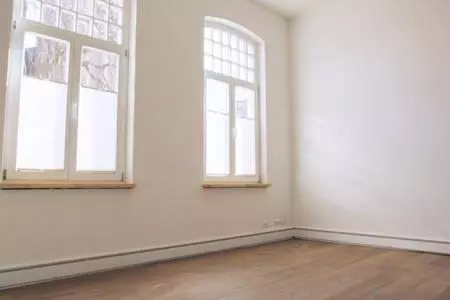
Anyone who chooses baseboard heating benefits from various advantages that other heating systems do not offer or only partially offer. The heating strips are operated cost-effectively with electricity or water and, thanks to the radiant heat emitted, enable even heat distribution as well as quick regulation or control via thermostats.
Optimal heat utilisation as well as economical and sustainable operation, which makes energy savings of up to 28% possible compared to conventional systems, are clearly among the convincing features of baseboard heating. In addition to environmental protection, energy efficiency and cost savings, the pleasant indoor climate is also an advantage of such a heating method. Cold zones and air circulation, as they occur with conventional radiators, do not occur with the practical baseboards in which heating elements are installed. Cooling down of the walls is also not possible - no mould growth! The even temperature also feels very pleasant, as the air is neither too humid nor too dry. Allergy sufferers also benefit from the healthy indoor climate that footboard heating creates. Further advantages: Baseboard heaters visually enhance the room, are hardly noticeable, can be installed in almost any property or room to save space, and are quick and easy to install. When should you decide on skirting board heating from Energy-com?
You want to know how baseboard heaters work? Then you will get the right answer now! A baseboard heater uses the principle of radiant heat and heats a room evenly, as the baseboards with their internal heating elements are laid continuously throughout the room. The heat is delivered directly to the surface of the inside of the property's exterior and interior walls, allowing it to spread throughout the room. In contrast to the convection heat of conventional radiators, the heat generated by the foot-base heating radiant heat namely does not rise from the top to the bottom and accumulates on the ceiling.
Another advantage: The walls also absorb some of the radiant heat generated, which means they neither cool down nor promote mold growth. Especially in case of not optimally insulated exterior walls, as they often occur in old buildings, historic buildings and churches, the baseboard heating is thus a welcome heating alternative that contributes to the preservation of the building fabric. Of course, a baseboard heating is also suitable for new buildings, in which environmentally friendly and energy efficient heating is required.
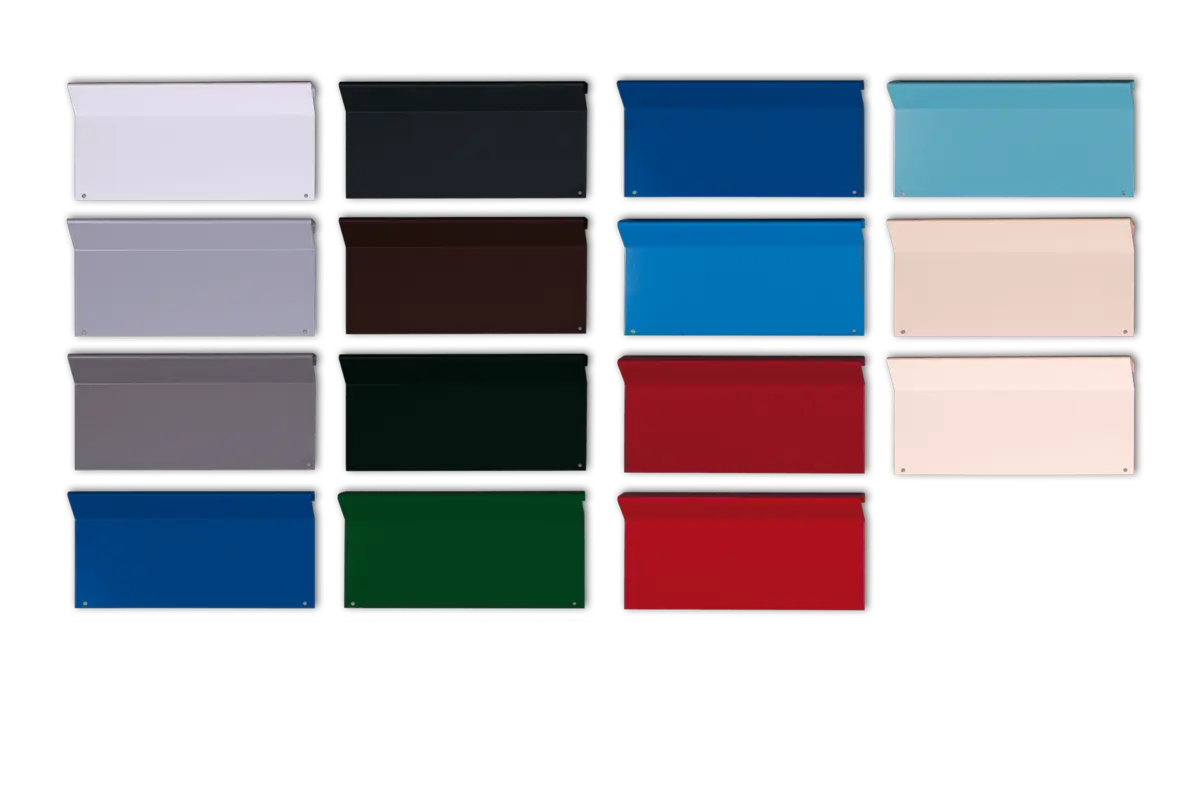
We at energy-com manufacture models as electric or water-bearing variants that are easy to install and connect. Various designs allow adaptation to structural special features, existing ambience and personal preferences. The standard colour is "pure white" (RAL 9016), other RAL colours are available on request. Particularly quick to install and put into operation is the electric baseboard heating, which is simply operated with electricity from the socket. For irregularly used rooms or properties such as holiday homes, this is a cost effective alternative. The water-bearing baseboard heating, on the other hand, has established itself in continuous operation and is connected to the existing water circuit.
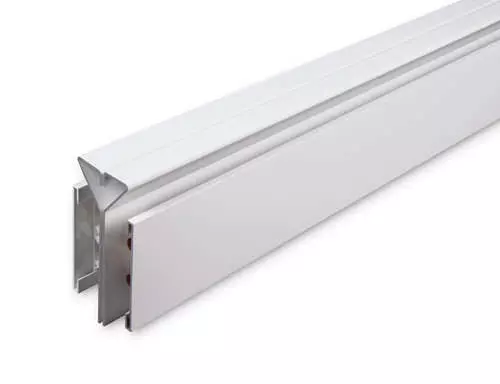
Baseboard heater-ECHL-6
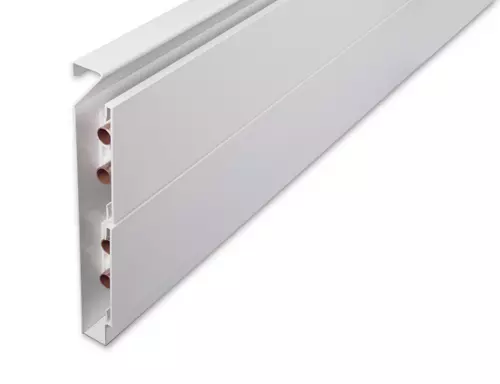
Baseboard heater-ECHL-3d
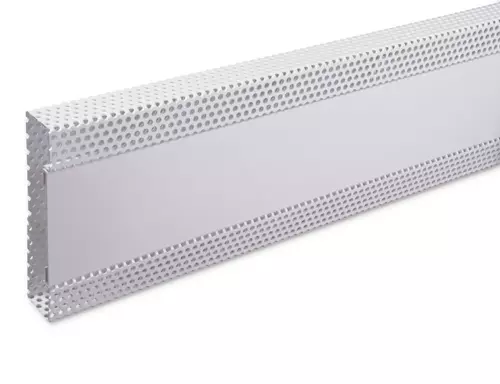
Baseboard heater-ECHL-3l
The Electric baseboard heaters are fitted with heating rods that are electrically heated by the current flowing through them. The resulting radiant heat is emitted to the surrounding walls and into the room, warming its air quickly and evenly. A water-bearing baseboard heater is a larger baseboard than the electric version, as copper water pipes run inside it. Hot water is pumped through the pipes, generating heat that is then released into the room air. The water-carrying heating element consists of two copper pipes, one above the other, with a diameter of 15 millimetres and a wall thickness of 1 millimetre. The heat conducting plates consist of 0.2 millimetre thick trapezoidal lamellas that are pressed onto the heat conducting pipes. Copper** is also used as a material with particularly high thermal conductivity for these heat conduction plates.
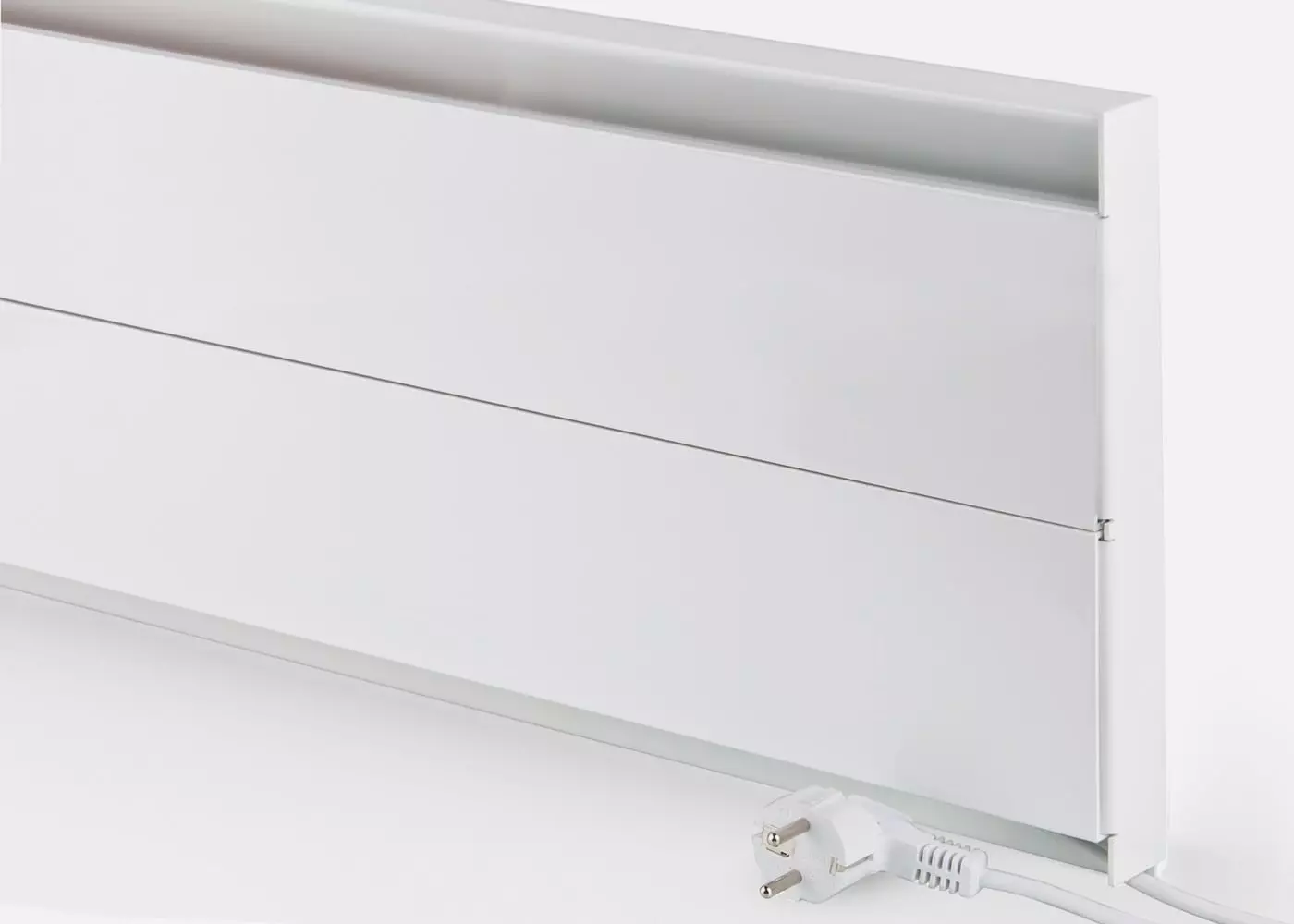
As an electric variant, the baseboard heater is quickly and easily connected to the mains.
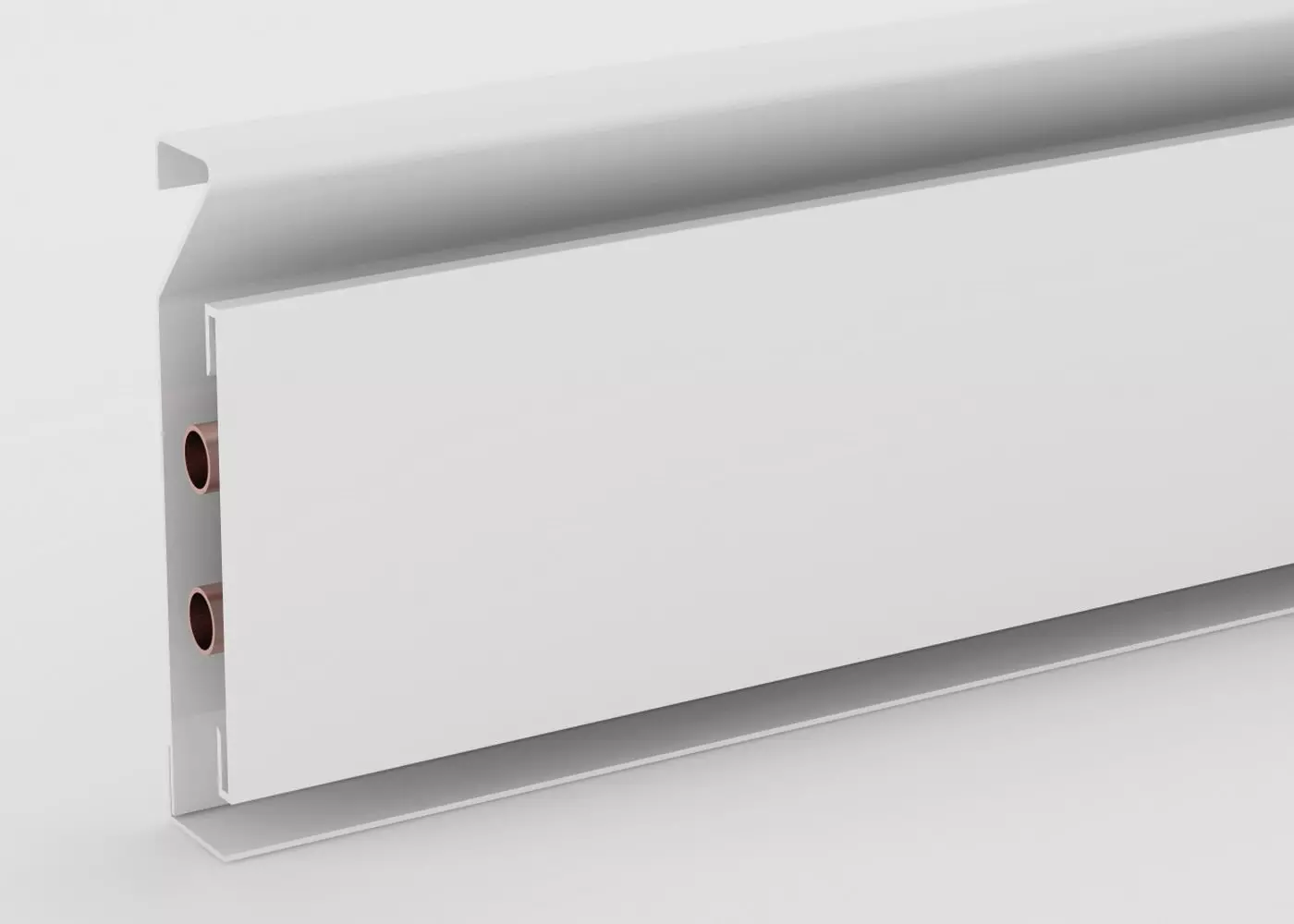
The water-guided baseboard heating is connected to the existing water circuit.
The entire construct of the baseboard heating is mounted on the entire wall by means of a base rail, which is made of aluminium, and covered by a powder-coated cover panel. This cover panel is barely noticeable thanks to a wall thickness of only 2 millimetres and is used for both the water-bearing version and the electric baseboard heater. The base cover, cover panel and heating register always make up the basic structure of the baseboard heating and can be installed in just a few steps. Additional components such as plastic brackets, end pieces and butt connectors can be ordered as accessories.
If you have decided to use a baseboard heater, we at Energy-com will select a suitable wattage of the baseboard heater for you that is perfectly tailored to your needs and heating habits. The power of the electric baseboard heating can vary from 125 watts to 575 watts, the power of the water-bearing models from 88 watts and 420 watts.
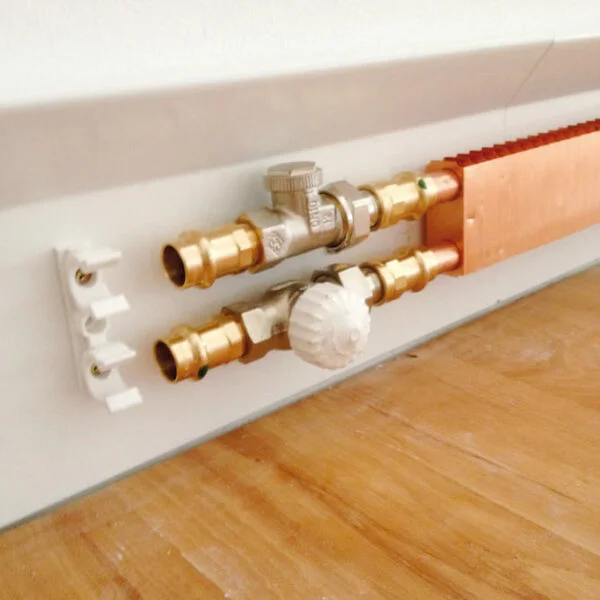
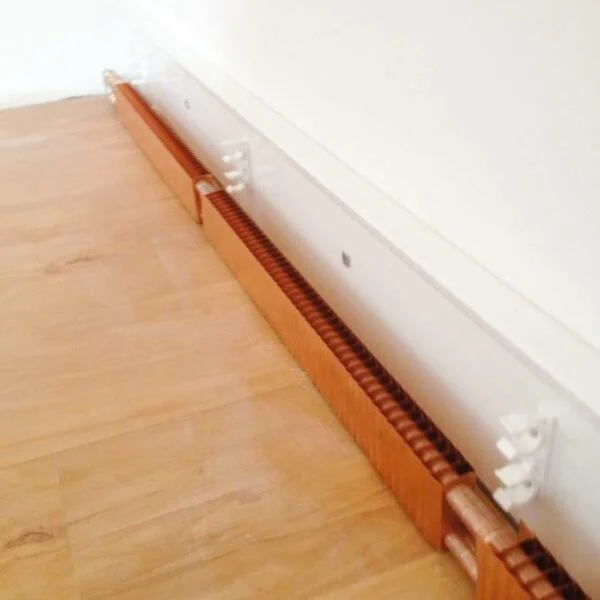
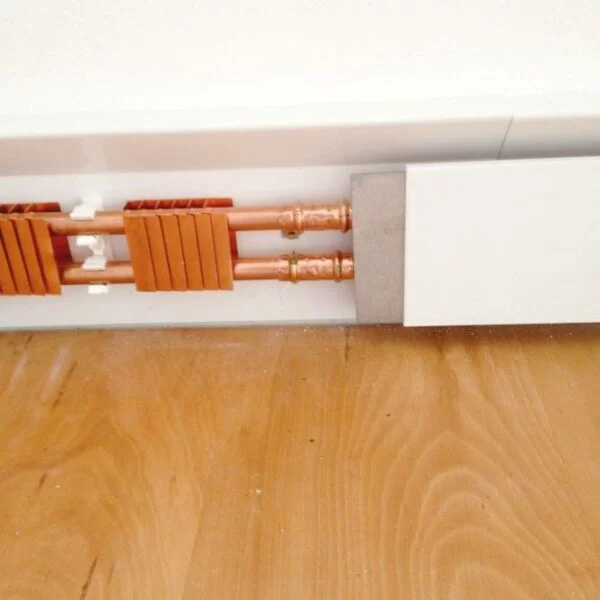
The actual installation is simple and can also be carried out in old buildings or historical buildings without any problems. Installation or conversion measures or even chiseling open walls are not necessary for installation of the baseboard heating. After one to two days of installation work, your modern heating system is connected and ready for operation. The electrically operated baseboard heaters are connected to the TS radio room thermostat via a radio control using a switch socket. This allows you to set the room temperature you want quickly and easily.
Since the skirting boards of the baseboard heating are available in numerous shapes, they can also be installed around corners. Even in stairwells that would otherwise remain cold, the baseboard heating can be installed without difficulty. This means that any wall can be equipped with it and almost any room can benefit from the pleasant warmth generated by the baseboard heating.
Find out here how to install an electrically operated skirting board heater.
Find out here how to install a water-bearing baseboard heating system.